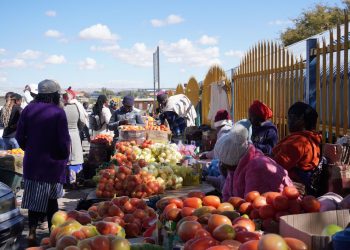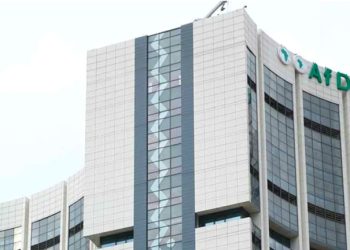
Namibia’s economy recorded a 5% growth rate during the first quarter of 2023, lower than the 7.3% recorded in the comparable period of 2022, latest data reveals.
According to the Namibia Statistics Agency’s (NSA) latest data on Gross Domestic Product (GDP), several sectors contributed to the sluggish performance in the first quarter of 2023.Â
“The financial services sector, manufacturing sector, and public administration and defence sector experienced declines in real value added of 4.9%, 2.7%, and 1.5%, respectively,” Alex Shimuafeni, Statistician-General and CEO of the NSA said.
The agriculture and forestry and health sectors also witnessed slower growth rates of 3.6,% and 2.6%, respectively.Â
Despite these setbacks, some sectors showed improved performance during the quarter.
 “The mining and quarrying sector experienced significant growth of 34.3%, while the wholesale and retail trade and electricity and water sectors recorded growth rates of 5.7% and 16.8%, respectively, outperforming the growth rates of the first quarter of 2022,” said Shimuafeni.
Meanwhile, the transport and storage sector demonstrated a growth rate of 6.7%, and the hotels and restaurants sector recorded an increase of 5.7% in real value added, surpassing the corresponding growth rates of the previous year.
On the demand side, final consumption expenditure declined by 3.2%, following a 14.8% increase in the same quarter of 2022.
“Government final consumption expenditure showed a marginal growth of 0.4% compared to a 1.4% increase in the corresponding quarter of the previous year.”
According to the NSA, Gross Fixed Capital Formation (investment expenditure) saw a significant turnaround, growing by 18.3% after a contraction of 10.6% in the previous year’s corresponding quarter.
Similarly, in nominal terms, the GDP for the first quarter of 2023 stood at N$54.2 billion, an increase of N$6.8 billion compared to the N$47.4 billion registered in the same quarter of 2022.
The NSA further noted that the export of goods and services also saw positive growth in both nominal and real terms.
“The nominal value of exports amounted to N$20 billion, up from N$14.3 billion in the corresponding quarter of 2022. The share of exports to GDP increased to 38.1% from 30.2% in the same quarter of the previous year.”
The Statistics Agency attributes the improved performance in exports to the export of intermediate and final goods.
Moreover, imports of goods and services increased in nominal terms to N$29.7 billion, compared to N$25.3 billion in the first quarter of 2022.
“In real terms, import growth slowed to 11.7% from 23.6% in the corresponding quarter of the previous year. This growth was driven by the importation of final and capital goods.”
Regarding financial indicators, the total deposits by all sectors increased slightly to N$128.1 billion, a 1.7 percent increase from the corresponding quarter of 2022. However, the stock of net claims on the central government shrunk by 9.5%, indicating a reduction in loan credits extended to the government.
Â











